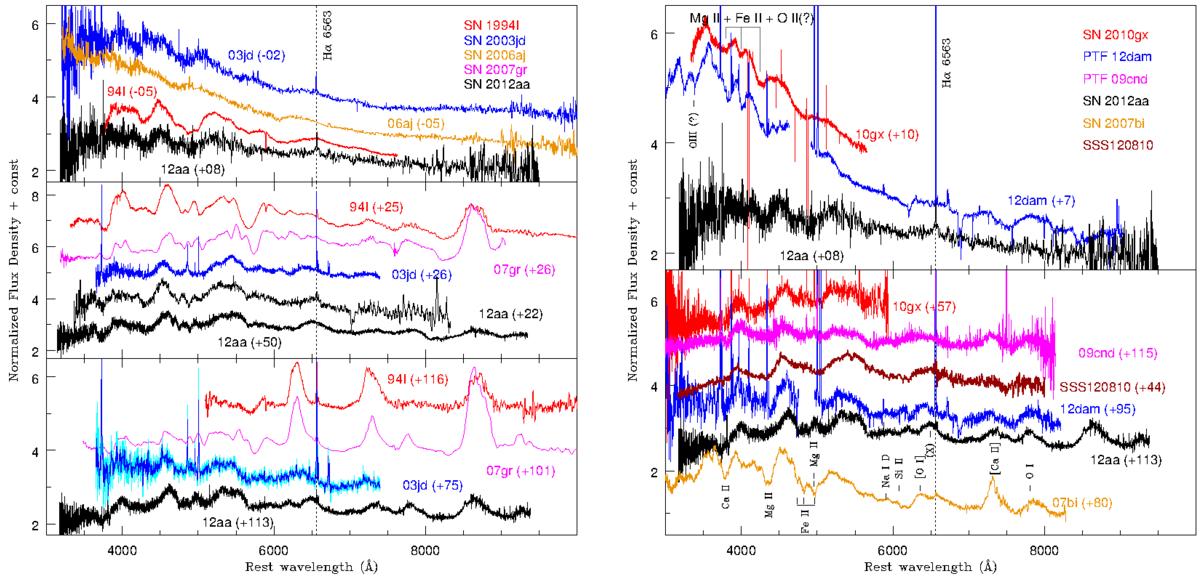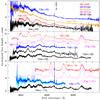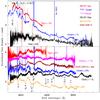Fig. 7

Spectral comparison between SN 2012aa and other H-poor events. Phases are with respect to the date of maximum light. Left panel: similarities between SN 2012aa and the broad-lined Type Ic SNe 2003jd (Valenti et al. 2008a), 2006aj (Modjaz et al. 2014), and 2007gr (Valenti et al. 2008b), as well as the normal Type Ic SN 1994I (Modjaz et al. 2014), are shown. Spectra of SN 2012aa are similar, but redshifted relative to those of SN 2003jd. However, unlike the case for SN 2003jd, we can seeFe ii lines in SN 2012aa at early stages, quite similar to what was observed in SNe 1994I and 2007gr. Right panel: comparisons between SN 2012aa and Type Ic SLSNe (e.g., SN 2010gx, Pastorello et al. 2010b; SN 2007bi, Young et al. 2010; PTF12dam, SSS120810, Nicholl et al. 2013, 2014; and PTF09cnd, Quimby et al. 2011) are shown. The absence (or weakness) ofO ii andO iii lines in the early-time spectra of SN 2012aa distinguishes it from canonical Type Ic SLSNe. However, near +100 d, the spectra are similar to each other (except those of SN 2007bi), as shown in the lower half of this panel.
Current usage metrics show cumulative count of Article Views (full-text article views including HTML views, PDF and ePub downloads, according to the available data) and Abstracts Views on Vision4Press platform.
Data correspond to usage on the plateform after 2015. The current usage metrics is available 48-96 hours after online publication and is updated daily on week days.
Initial download of the metrics may take a while.




